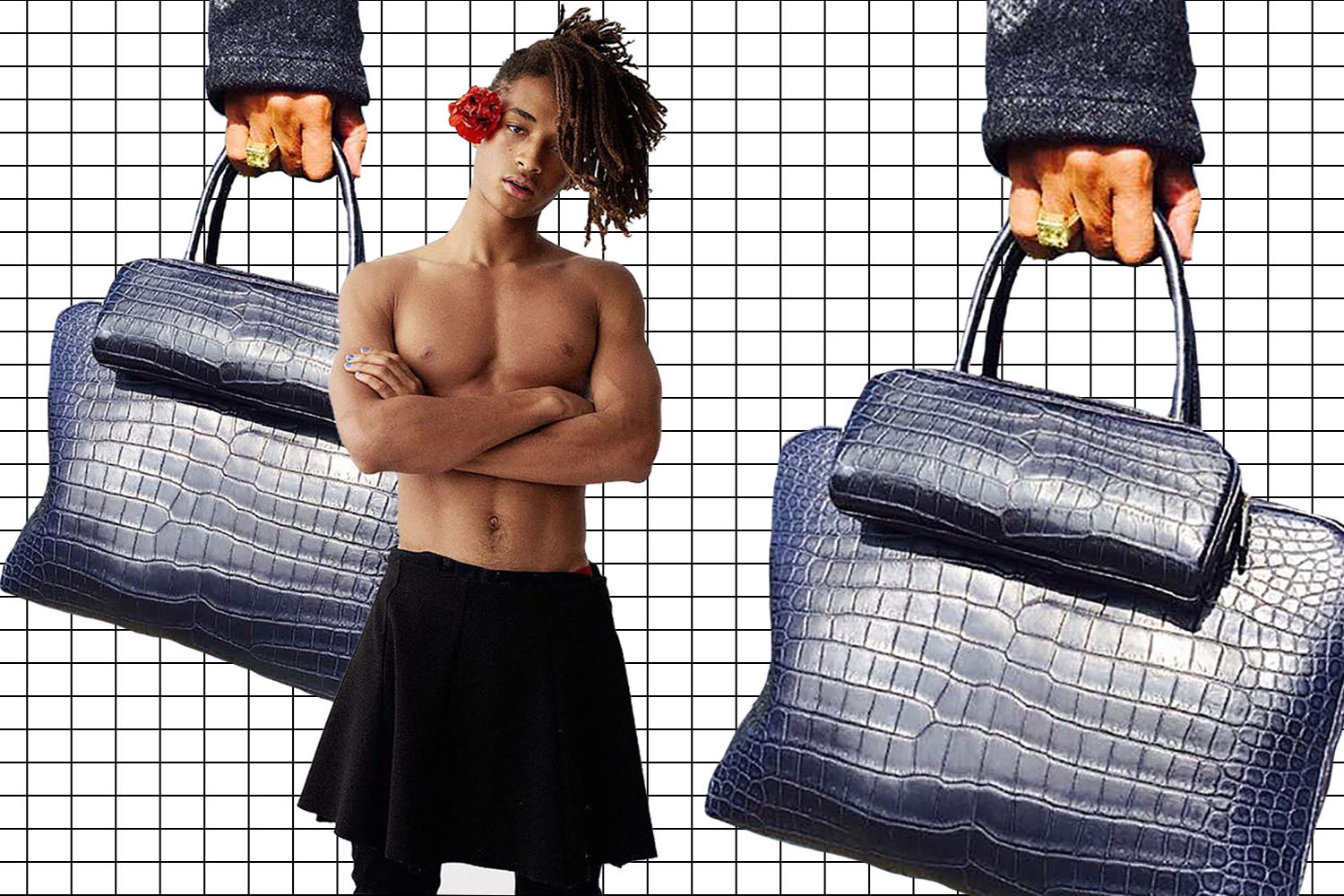Those black sunglasses sat where they always do as Anna Wintour relayed her thoughts of Paris Fashion Week. Wintour mentioned designer John Galliano as he related to an inspiring idea—that the need for separate men’s and women’s catwalks was no longer necessary. The byproduct being department stores abandoning the overhanging men’s and women’s signs we all look for immediately upon arrival in a store. While this might seem to be the natural conclusion in an ongoing effort to minimize lines between men’s and women’s fashion, how long can inclusivity and acceptance continue to evolve when consumers live in a world driven by stereotypes?
The opposition of stereotypes is not new, yet standards of masculinity and sexuality seem to be stronger. Any “Friends” connoisseur recalls the episode where Joey acquires a Ralph Lauren Bag. After being told it would get him a date with a man (implying a man carrying a bag has to be gay) Joey goes on to show the Ralph Lauren catalog to prove that it was by no means a purse, but a men’s bag. The 1999 episode remains relevant almost 20 years later where terms such as mag (men’s bag), mandals (men’s sandals) and even man bun are not only prevalent but used in a borderline derogatory manner.
At the constituent level, a man’s bag and women’s purse are simply pieces of leather, yet the narrative constructed by hypermasculinity and the media have evolved their meanings into homophobic fear. By shaming men into ditching their bags, society continues to suggest that not only can you look “gay” (which you cannot because sexualities are not adjectives) but that it is inherently bad. Such verbal practices bind not only a minority but an entire consumer base off of rigid and antiquated standards.
Jaden Smith, Kanye West and Pharrell wearing dresses on magazine covers and Celine tops during performances doesn’t change the daily realities for men struggling to elevate their wardrobe. Menswear is based in tradition, precedent and habit, making any attempt at change increasingly difficult.
Stephanie Cooper, a menswear professor at Central Saint Martins, elaborates on the nuances of menswear for The Telegraph saying it is, “driven by obsession to detail [and] reinvention and subversion of the tradition.” In men’s fashion, “the width of a trouser or lapel can become a life-changing event.” Phrases like “men’s couture” don’t readily exist in the fashion world because the consumer is scientifically less likely to purchase anything different than what they already know; In a Money Crashers article Dr. Neale Martin, a business professor at Kennesaw State University, reveals shoppers aren’t making their purchases based off logic, but buying habits. The longer these habits have to sink it, the harder and less likely they are to change.
Though Wintour’s views of an androgynous consumer appeal to those that feel pressured into labels and boxes are optimistic, is human nature’s resistance to change stronger? Could the fear of “looking gay” (if you have ever worked in a retail store this phrase may be familiar) subside to a society’s apprehension to any silhouette other than a suit?
While the fashion industry and world have recently become more accepting, humanity inherently confines itself to boxes and labels. Although a stereotypical gay man dressed in flamboyant attire can pass a man in a suit without much thought or interaction, confining menswear to two subcategories reflects the division of all male consumers.
Despite Wintour’s unisex vision looking like a seemingly reachable ideal, until the consumer is ready it will not take. Change comes from the work of designers like Galliano, Rick Owen and Jonny Johansson of Acne Studios, who aren’t waiting for the consumer to evolve but giving them the opportunity to, going against the grain and against human nature to set precedent for a new habit to be formed: dressing unapologetically.
Written by Jack Vasconcelos
Graphic by Kat Sours

